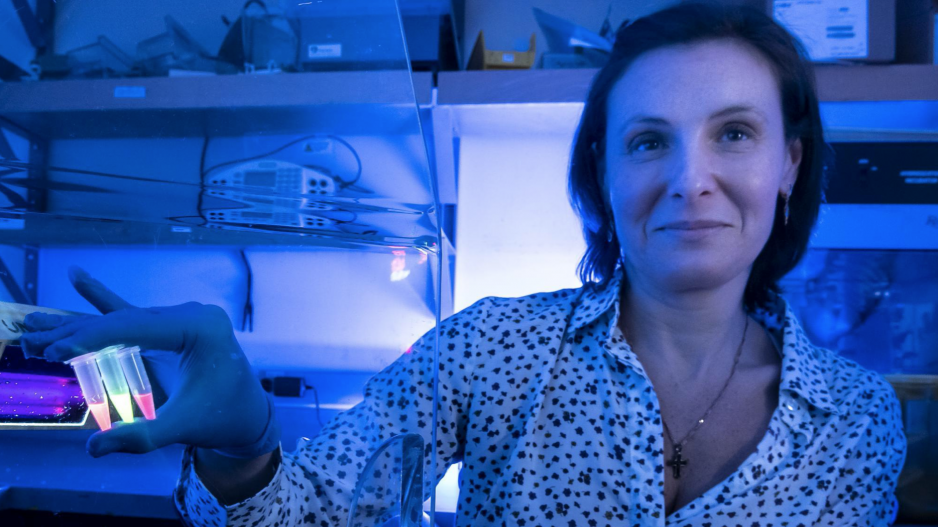It’s best for Canada to be “over-prepared” for the fallout of COVID-19 rather than the alternative.
That was the message Anita Anand, Minister of Public Services and Procurement, delivered March 20 during a ministers briefing outlining plans to boost domestic medical supplies.
And for the next pandemic, imaging technology developed by Simon Fraser University researchers will be prepped for deployment in coronavirus testing kits that will come much cheaper than the current offerings.
“You adapt and you have to respond to future emergencies just as you have to be able to respond to the current ones,” said Paul Unrau, an SFU molecular biology and biochemistry professor who helped develop the new technology known as Mango with post-doctoral fellow Lena Dolgosheina.
The brightly coloured imaging tech detects RNA in cells using an aptamer, which functions similar to a magnet as it targets and binds fluorescent dye molecules that glow brightly when bound.
RNA molecules modified to contain the aptamer stand out compared with other parts of a cell so researchers can see them easily under a microscope.
“Testing on humans is quite a different thing than testing on tissue culture, but we’re hopeful that we should be able to test things in the moderate-to-near future. Not immediate by any means, but certainly by the next pandemic or outbreak of virus,” Unrau said.
COVID-19 testing is RT PCR-based (reverse transcription polymerase chain reaction), an exponential means of amplifying nucleic acid sequences in a very specific way.
“While it works very well and while it’s nucleic acid-based, it takes time and the machines that are used to do the RT PCR are relatively expensive,” Unrau said, referring to costs for machines that can range from $70,000-100,000 each.
“So it’s hard to really get that testing equipment closer to the people.”
The Mango technology is also nucleic acid-based, but the amplification can be done using much less-expensive equipment.
“These isothermal assays that we’re using with the Mango technology that we’ve developed in principal allow us to keep the sensitivity the same as the RT PCR, which is great for differentiating between closely related viral species. But it also becomes considerably cheaper in the implementation,” Unrau said.
The Mango dyes are available through Richmond-based Applied Biological Materials Inc., while the Mango nucleic acid sequence-based amplification (NABSA) kits received funding from the Canadian Institutes of Health Research as part of an effort guard against future outbreaks.
“If we can do something now, that’s great. But even if we can’t do something now, there will be a next time,” Unrau said.



